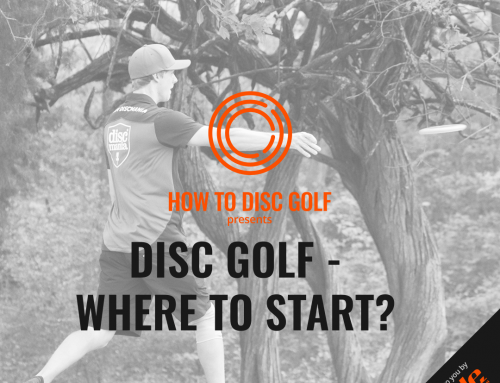
Most new disc golfers experience a brief state of panic when they realize just how many discs are on the market. If you’re not even sure how to execute proper form and are at the beginning stages of the sport, how are you supposed to know what molds and in which plastics will be the best?
Let’s break down some of the basics and give you a better understanding of what makes golf discs different and how you can choose ones that will help you to play with confidence.
Golf vs Frisbee
If you have a few frisbees laying around at home, you could theoretically take them out to your local course and play around, but it might not be much fun. That’s because a frisbee is designed to be light and exhibit a lot of glide at slower speeds. Even if you crank on it with full power, there’s a good chance it’s not going to go as far.
A golf disc, on the other hand, is crafted for specific types of shots and is made to be far more aerodynamic. Drivers have the slimmest profile and will respond to being thrown in a variety of ways. Both midranges and putters slightly resemble a frisbee in that they have wider rims, but they are much smaller and will travel much farther than your traditional household toy.

Making A Golf Disc
Both frisbees and golf discs are manufactured in similar ways and allow for a wide range of molds to choose from. Disc companies use plastic that’s melted down and forced through an injection molding machine. In many instances, golf discs are made in separate components and then joined later on.
What’s great about this process is that each manufacturer can create their own lineup of discs with varying profiles. Slight changes to the mold will dramatically change how the disc flies, so the ability to produce multiple types of drivers, midranges, and putters aren’t very difficult.
More Than Just Plastic
As soon as you get into the sport you’ll realize that there’s more to a golf disc than just a piece of plastic. A huge assortment of plastic types is available, with each manufacturer creating their own version of materials that work better in certain weather conditions and types of play.
In general, beginners might like using more baseline types of plastic as they are less expensive and offer players an easy to grip the disc. While they are easier on your wallet when building up a collection, these basic plastics don’t quite have the extended lifespan as other more premium plastics.
Each manufacturer will have their own name brand for various material types, and some offer a more extensive lineup of plastics than others. More advanced players will typically benefit from investing in premium plastic golf discs in a variety of molds and disc weights. Certain plastic types are best for the colder weather while others tend to change your grip due to the tackiness of the disc itself.
Credit to Best Disc Golf Discs http://www.bestdiscgolfdiscs.com/
Throw What Works For You
If you’re loyal to a specific disc brand, try out each of their plastic types to see how they work with your grip and the climate you typically play in. Those who are newer to the sport might benefit from throwing a mixed bag – a selection of discs from several brands. Ultimately, the best way to know which molds and plastics work for you is to get out there and throw!
Here’s a link to a survey done by Infinite Discs with an overview on the main manufacturers
https://infinitediscs.com/blog/state-of-disc-golf-2015-manufacturer-overview/
We’d also like to point out there are other smaller brands who are working hard to grow the sport not necessarily on the survey above but who are giving it a crack..
Highlighting a disc manufacturer out of New Zealand who are sure to grow over the next few years. RPM Discs.






Leave A Comment